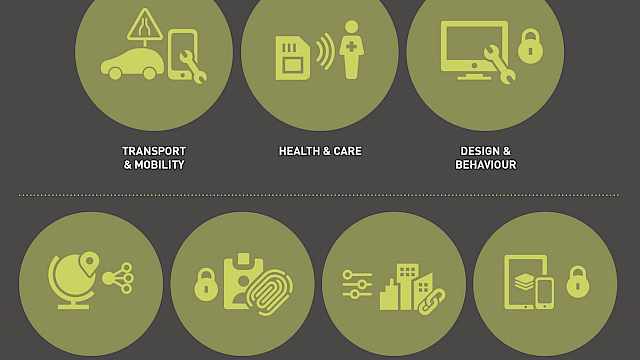A Unique Form of Fraud
Online romance fraud, whereby a scammer feigns romantic interest in a user of a dating platform to financially exploit them, has surged in recent years. In the US, reported losses have reached $750 million annually, while in the UK, losses have totalled almost £100 million in the past year (IC3, 2023; ActionFraud 2023). These figures may be conservative, as romance fraud is often under-reported due to the embarrassment victims suffer (Whitty and Buchanan, 2016).
Romance fraud goes beyond being a financially devastating cybercrime; it also carries a significant emotional toll. Victims not only experience financial loss but also grapple with the emotional impact of realising that what seemed like a genuine relationship was a scam, with many struggling to accept the fact they have been exploited (Ibid.). The emotional impact often prevents many victims from seeking support due to the feeling that being scammed is a personal failure; others suffer a breakdown in the trust of others (Ibid.).
A Challenging Form of Fraud
While prior work has focused on analysing meta-aspects such as profile pictures and user bios for scammer-traits (Huang et al., 2015), research into how technology solutions can be integrated into the design and application of warnings against romance fraud is limited.
As scammers often tailor their approach, each victim receives a ‘personalised love story’. Thus, the awareness campaigns seen most frequently around Valentine’s Day, such as TakeFive, often fail to offer targeted, actionable messaging. For example, the TakeFive advice doesn’t consider scammers who deploy 'foot-in-the-door' or those who may request photos/videos for later use in sexploitation. Meanwhile, international attempts to raise awareness and standardise messaging, such as the inaugural World Romance Scam Prevention Day, are still in their infancy.
Below, we explore current preventative and supportive measures for victims of romance fraud and argue that a personalised approach is merited to tackle the issue.
...in the UK, losses [to romance fraud] are placed at almost £100 million in just the past year.
Preventative Measures
Awareness campaigns can help users defend themselves against scammers before they become a threat in the form of a simple, easily distributable means of warning about the risks of romance fraud. By highlighting common scammer tactics, users can, in theory, apply the message to their situation. However, awareness campaigns must be generalisable to different scenarios. This creates the issue of ‘white noise’ whereby users can be confused about what constitutes romance fraud, with victims failing to see their experience reflected in the messaging (Cross et al., 2016).
If users cannot find relevant information through awareness campaigns, they may turn to self-education in the form of online searches. This rudimentary approach poses new challenges. Given the often-explicit nature of romance fraud in the form of sextortion and blackmail, some users have found that some relevant materials were blocked by their Internet Service Provider – being mistaken for indecent material, due to the keyword searches of ‘sextortion’ or ‘revenge porn’ used. In other cases, materials in proprietary file formats cannot be accessed by all users, or links to materials are no-longer available (Maeng and Lee, 2022).
Supportive Measures
For victims of romance fraud, peer support groups offer tailored face-to-face advice. While peer support groups are an important first step for victims on the road to recovery, they are not without issue. Although attendees receive in-person peer support groups positively, continued attendance did not reflect this. As many as 90% of attendees were no longer attending sessions one year on from their first visit (Cross, 2019). Victims noted the discomfort that comes from being open about extremely private conversations and many opted to listen to others instead. The lack of engagement with the group led some to stop attending, creating a feedback loop where a small group of victims becomes even smaller as more and more no longer attend.
An approach to mitigate the financial damage is reporting cases of romance fraud to the authorities. Correia (2019) studied how Action Fraud, the UK’s national fraud reporting centre, recorded reported data, suggesting that various pieces of information were either missing or misreported, such as which investigator was assigned to a case, or the amount of money lost in a scam. In cases where victims were exploited of smaller amounts of money over a longer period, it may not be initially clear just how much has been lost and as such the total amount lost was recorded as ‘0’; making it harder to determine the severity of the crime. Broader demographic information, such as age, ethnicity, and background, were also not recorded. Failing to record which communities are affected by romance fraud makes it more challenging to create effective outreach programs tailored to minorities who also experience romance fraud (Tao, 2022).
Despite the devastating impact of romance fraud...implementing effective countermeasures against such crimes continues to prove difficult.
A Preventable Form of Fraud
The above overview illustrates that current approaches are not meeting the needs of users – both in terms of preventing romance scams and supporting victims. Existing methods simply do not have the speed and flexibility to adapt to the scammers ever-evolving playbook – perhaps a critical rethink of tackling romance fraud using a technology or data driven approach may be needed.
While it is encouraging to see users taking proactive steps in the form of self-education (Ibid.), there should be a more curated approach, for example, in the form of a central repository of information. The issues raised around the generic nature of awareness campaigns also suggest that the user’s own context should play a more significant role in the advice provided through conversational analysis – using the likes of AI; consideration should be given to directly integrating warning systems with dating platforms such as those on banking apps.
Building safety measures into dating platforms can protect users from harm, using real-time safeguards. Our work in deploying AI-backed safety measures that operate as the user converses with the potential scammer removes the need to remember potential warning signs. Instead, they are alerted to suspicious activity as it occurs. While still in the developmental stage, our work shows promising signs of moving romance scam prevention in a more dynamic, responsive, and, hopefully, effective direction; helping keep users safe regardless of the scammer's tactics.
Romance fraud is a complex and evolving cybercrime. Safeguards deployed against it should be equally adaptive to users’ needs. By exploring countermeasures that integrate with dating platforms directly, a more flexible approach can be taken to inform, educate, and protect users.
Read more
IC3, I.C.C.C.: 2022 IC3 Annual Report. https://www.ic3.gov/Media/PDF/
AnnualReport/2022 IC3Report.pdf
ActionFraud (2023) NFIB Fraud and Cyber Crime Dashboard, ArcGIS dashboards. Available at: https://colp.maps.arcgis.com/apps/dashboards/0334150e430449cf8ac917e347897d46 (Accessed: 15 December 2023).
Cross, C. and Kelly, M. (2016) The problem of ‘white noise’: examining current prevention approaches to online fraud, Journal of Financial Crime, Vol. 23 No. 4, pp. 806-818. https://doi.org/10.1108/JFC-12-2015-0069
Maeng, W., & Lee, J. (2022) Designing and Evaluating a Chatbot for Survivors of Image-Based Sexual Abuse. Proceedings of the 2022 CHI Conference on Human Factors in Computing Systems.
Cassandra Cross (2019) You’re not alone: the use of peer support groups for fraud victims, Journal of Human Behavior in the Social Environment, 29:5, 672-691, DOI: 10.1080/10911359.2019.1590279
Correia, S.G. (2019) Responding to victimisation in a digital world: a case study of fraud and computer misuse reported in Wales. Crime Science, 8, 4. https://doi.org/10.1186/s40163-019-0099-7
https://www.actionfraud.police.uk/data
Whitty, M.T. and Buchanan, T. (2016) ‘Online dating romance scam: The psychological impact on victims – both financial and non-financial, the’, Criminology & Criminal Justice, 16(2), pp. 176–194. Available at: https://doi.org/10.1177/1748895815603773.
Tao, H. (2022). Loving strangers, avoiding risks: Online dating practices and scams among Chinese lesbian (lala) women. Media, Culture & Society, 44(6), 1199-1214. https://doi.org/10.1177/01634437221088952
Huang, J., Stringhini, G., Yong, P. (2015). Quit Playing Games with My Heart: Understanding Online Dating Scams. In: Almgren, M., Gulisano, V., Maggi, F. (eds) Detection of Intrusions and Malware, and Vulnerability Assessment. DIMVA 2015. Lecture Notes in Computer Science(), vol 9148. Springer, Cham. https://doi.org/10.1007/978-3-319-20550-2_12
Copyright Information
Image credit: © Pawel Czerwinski | unsplash.com







